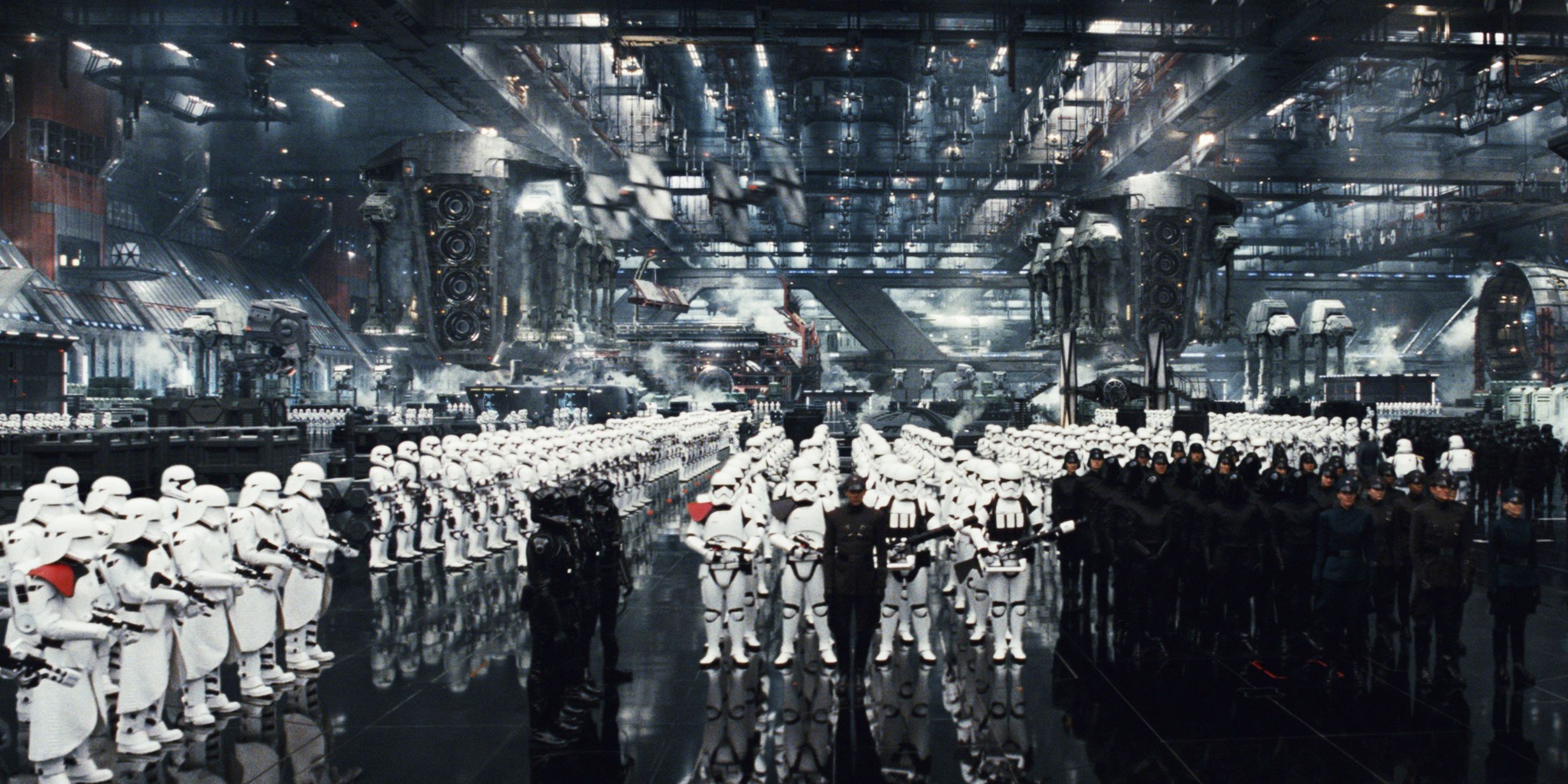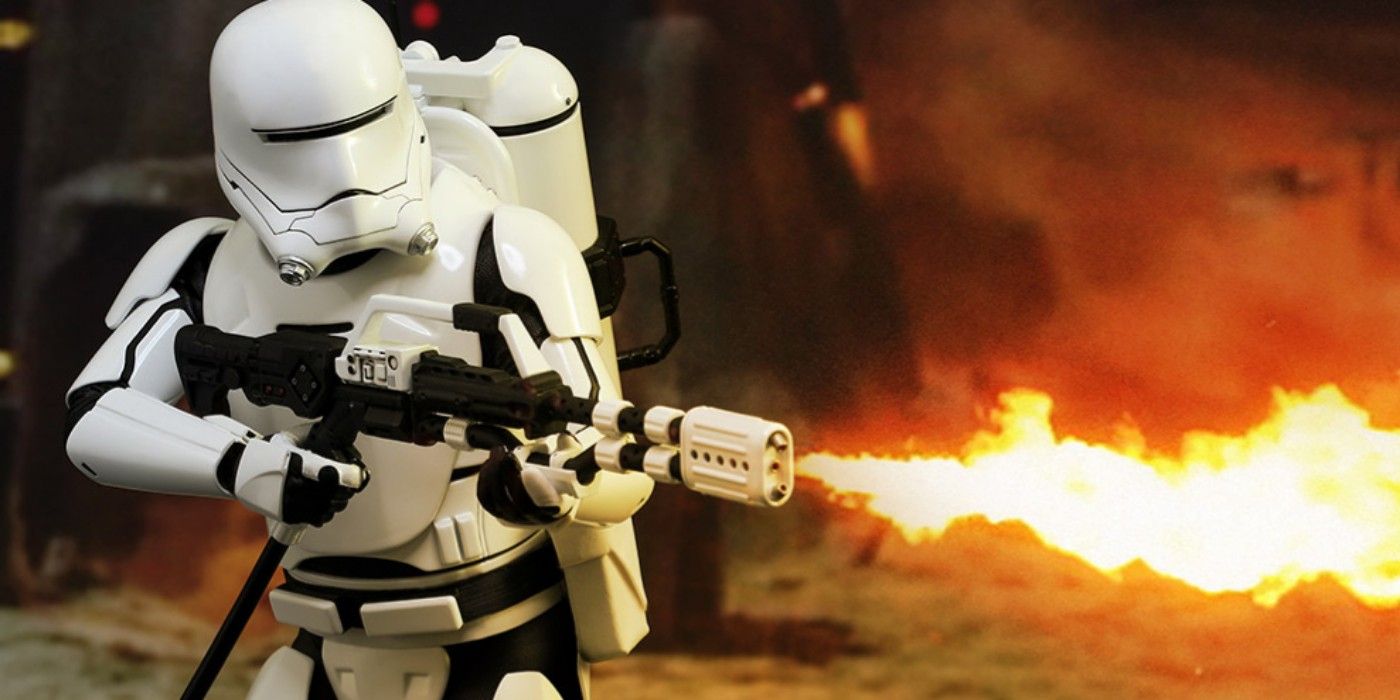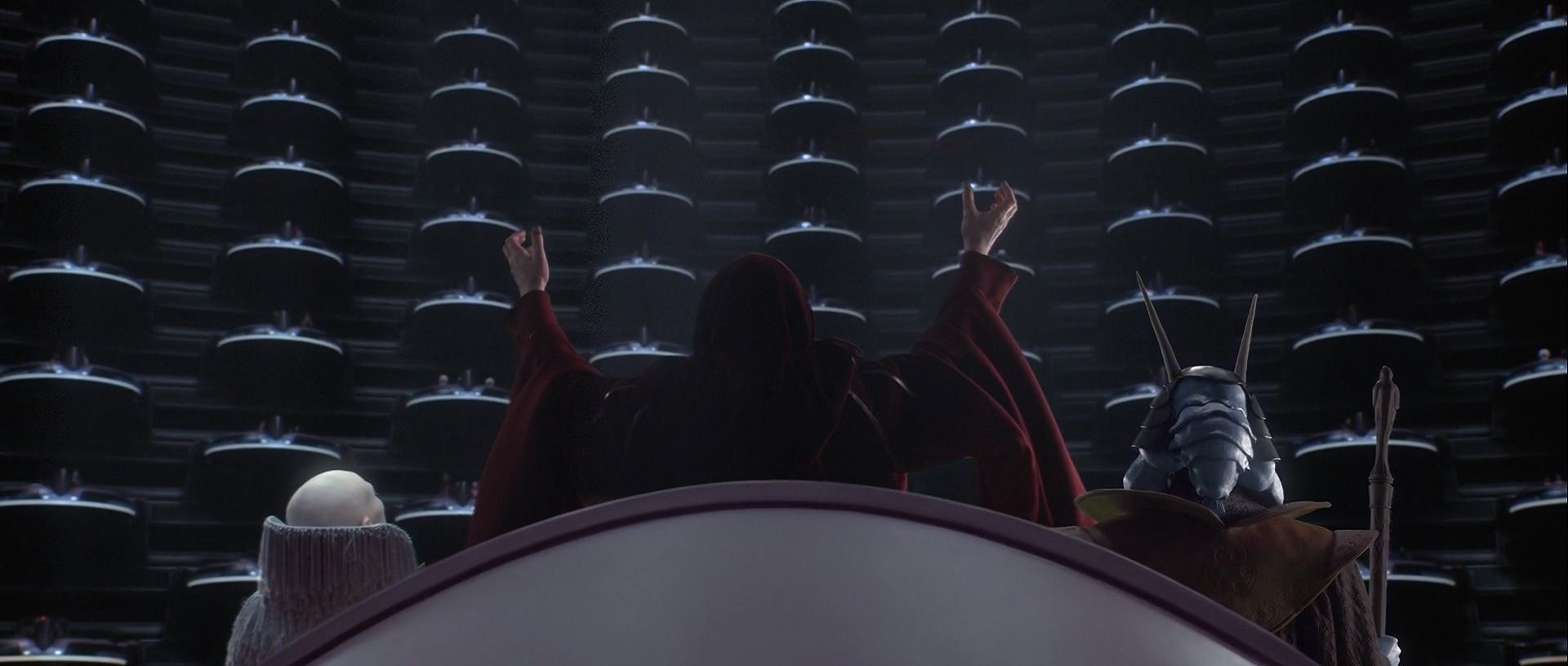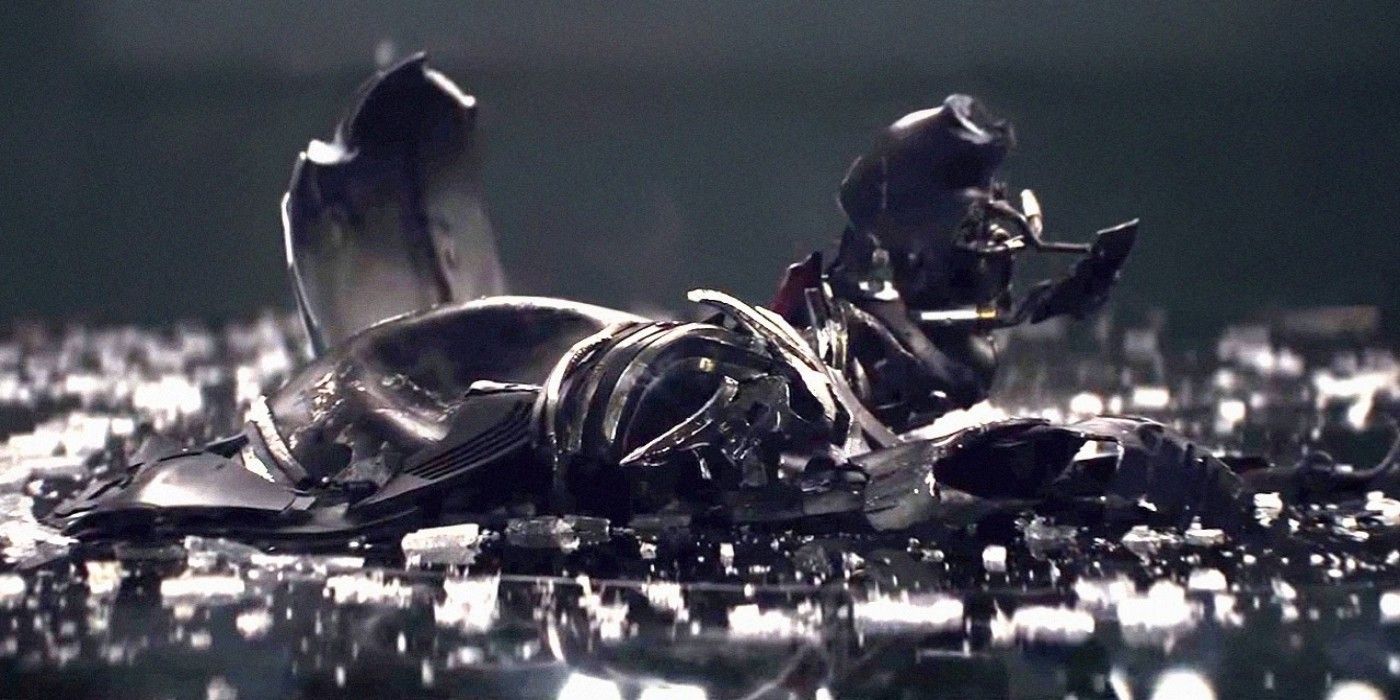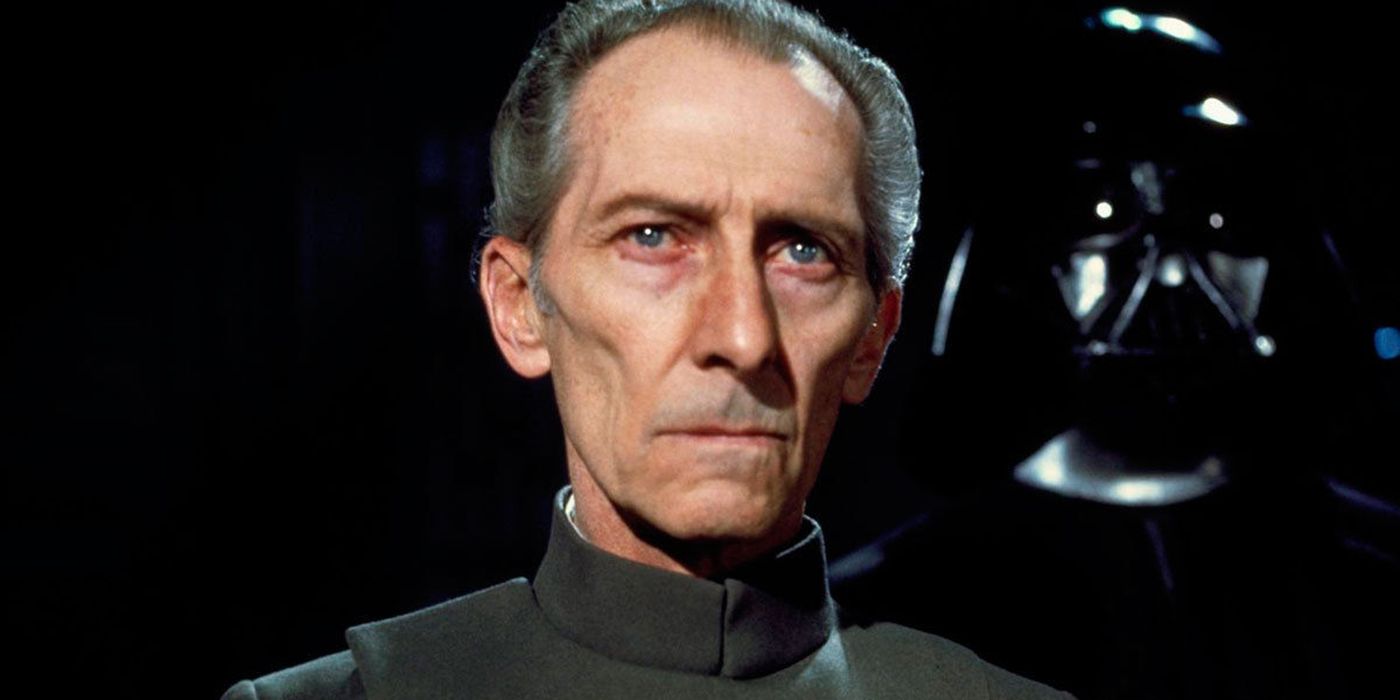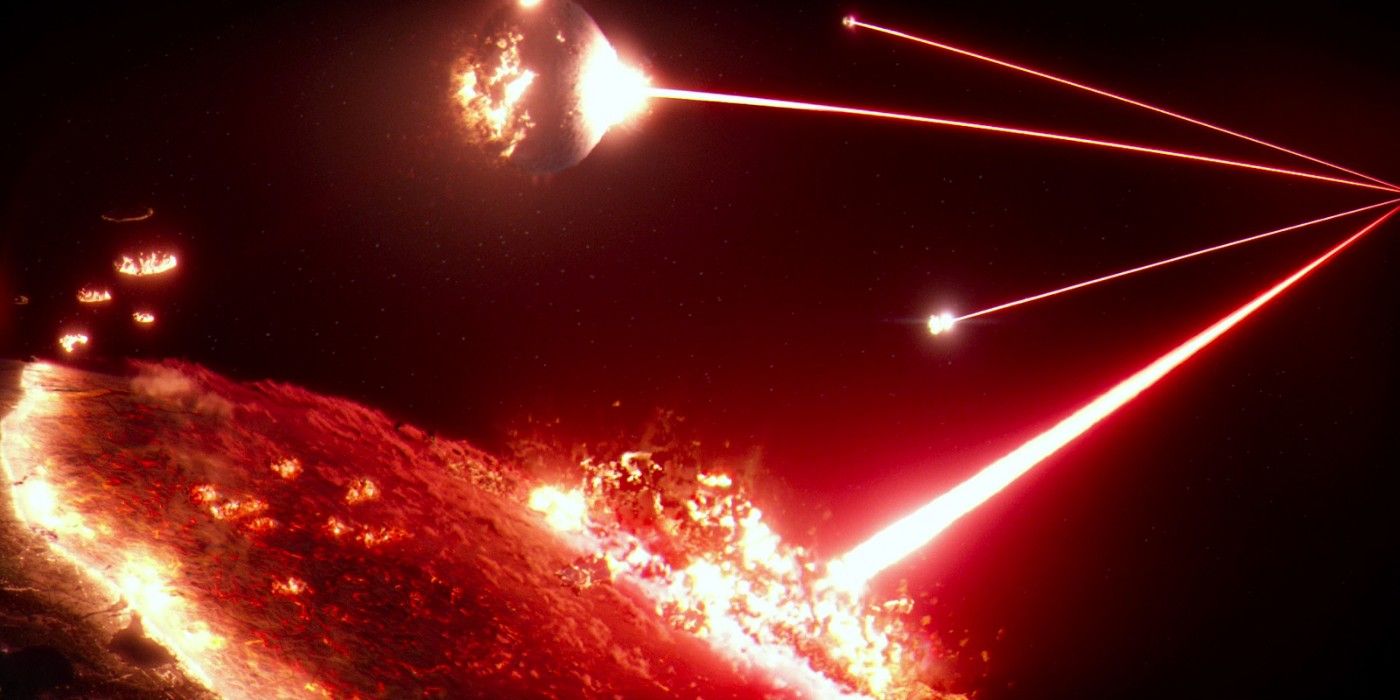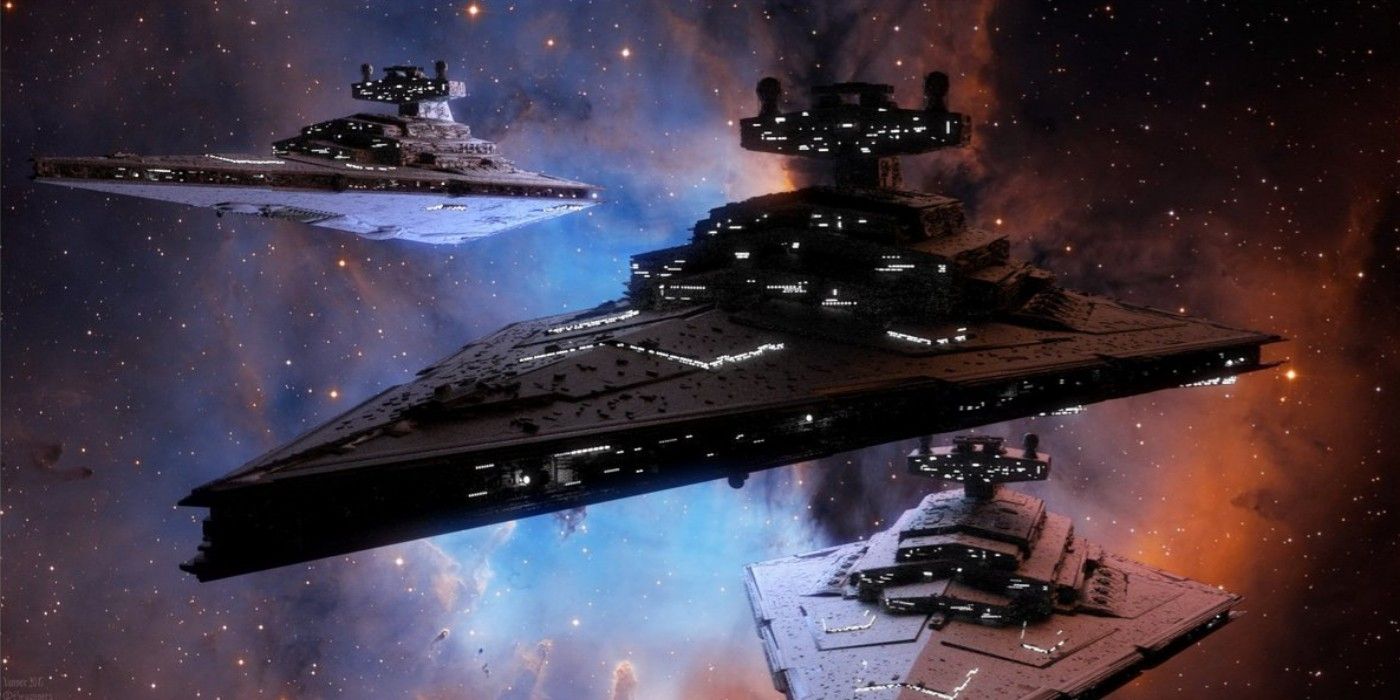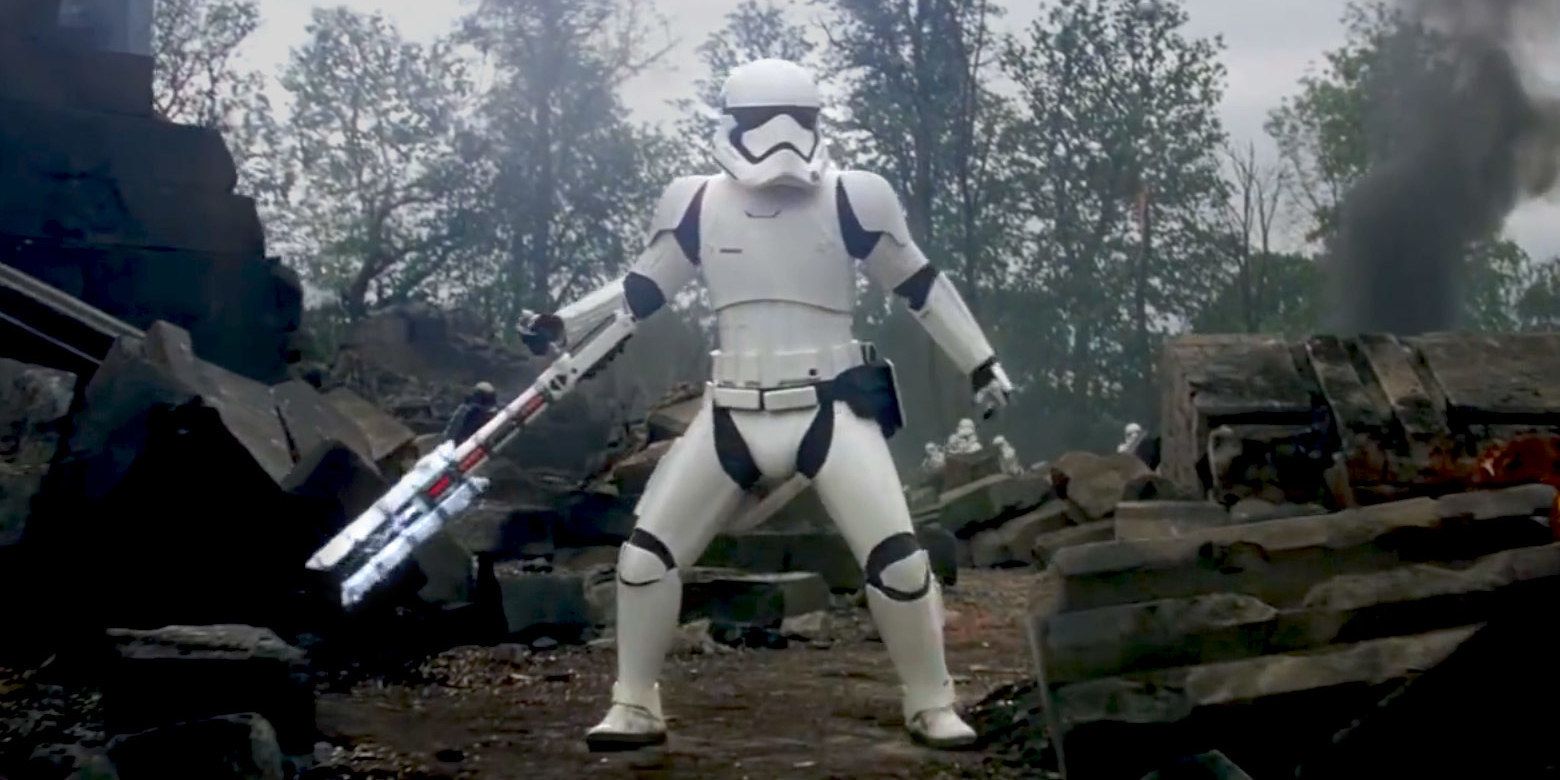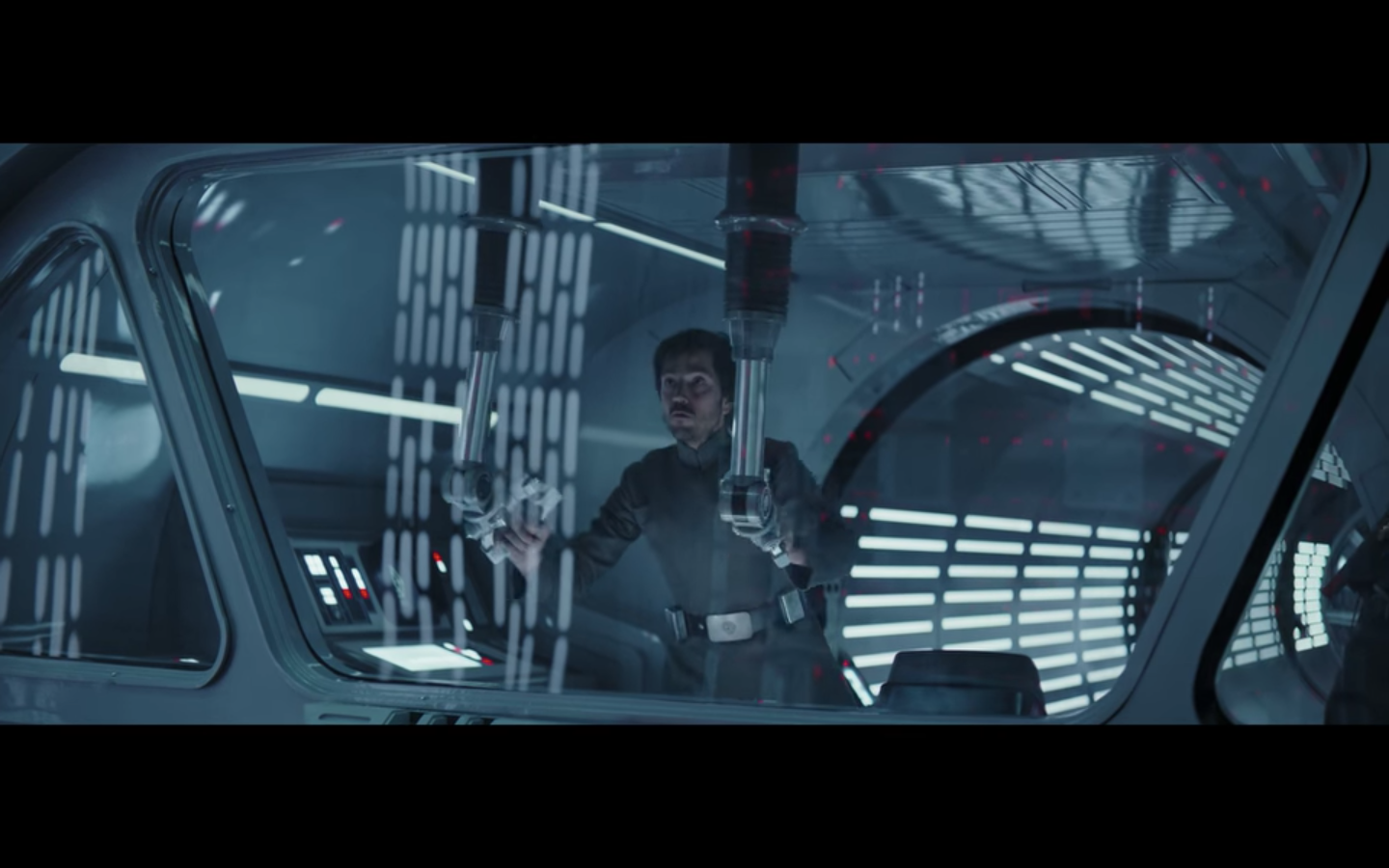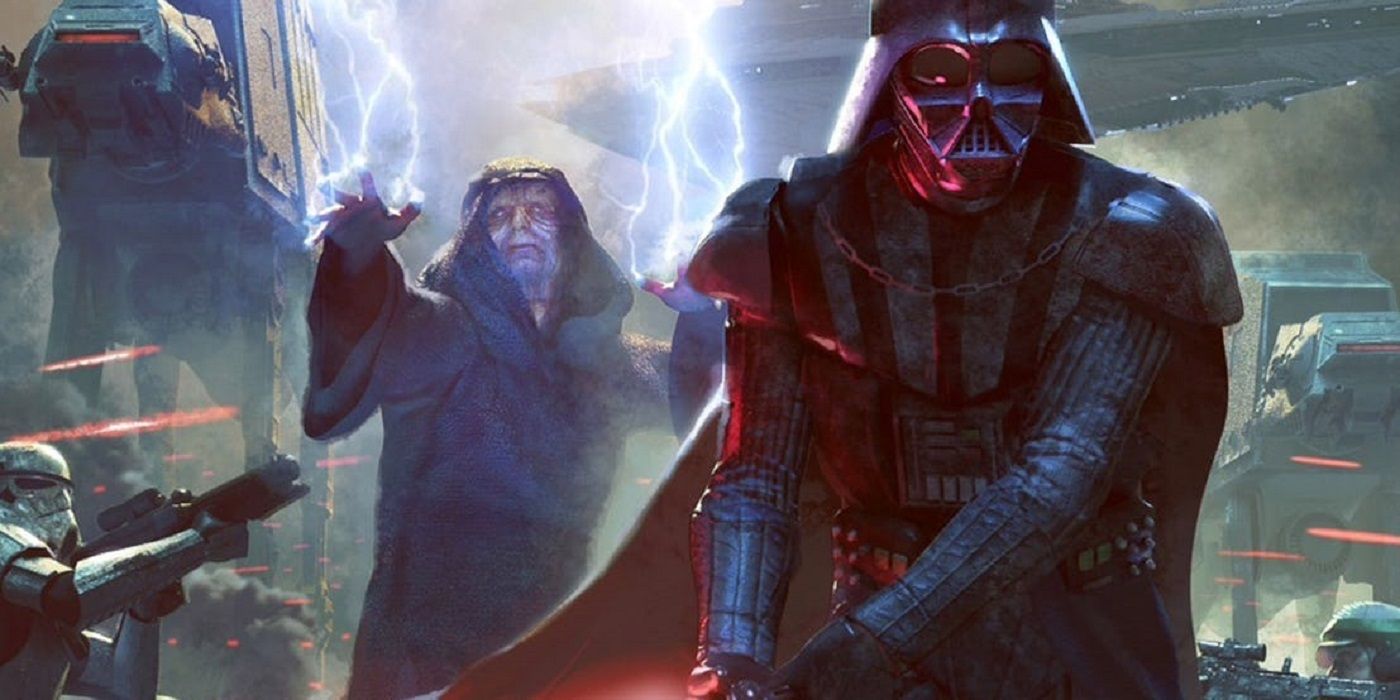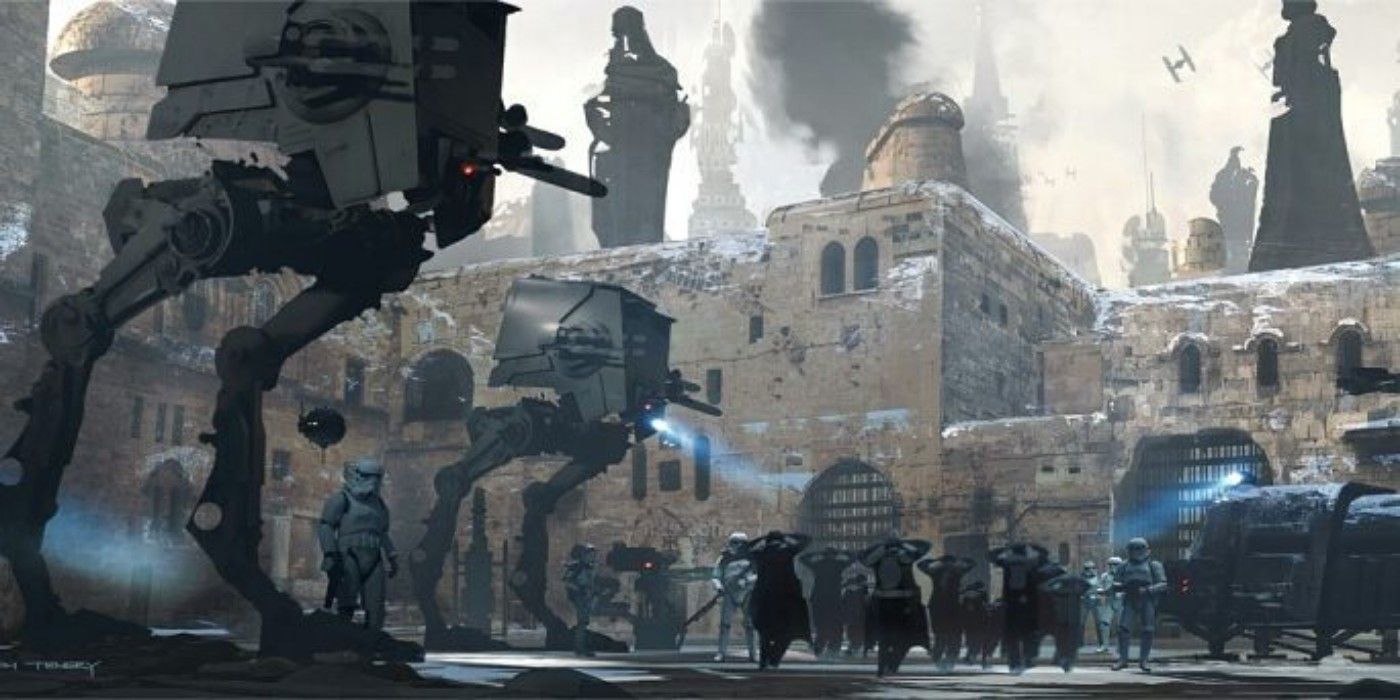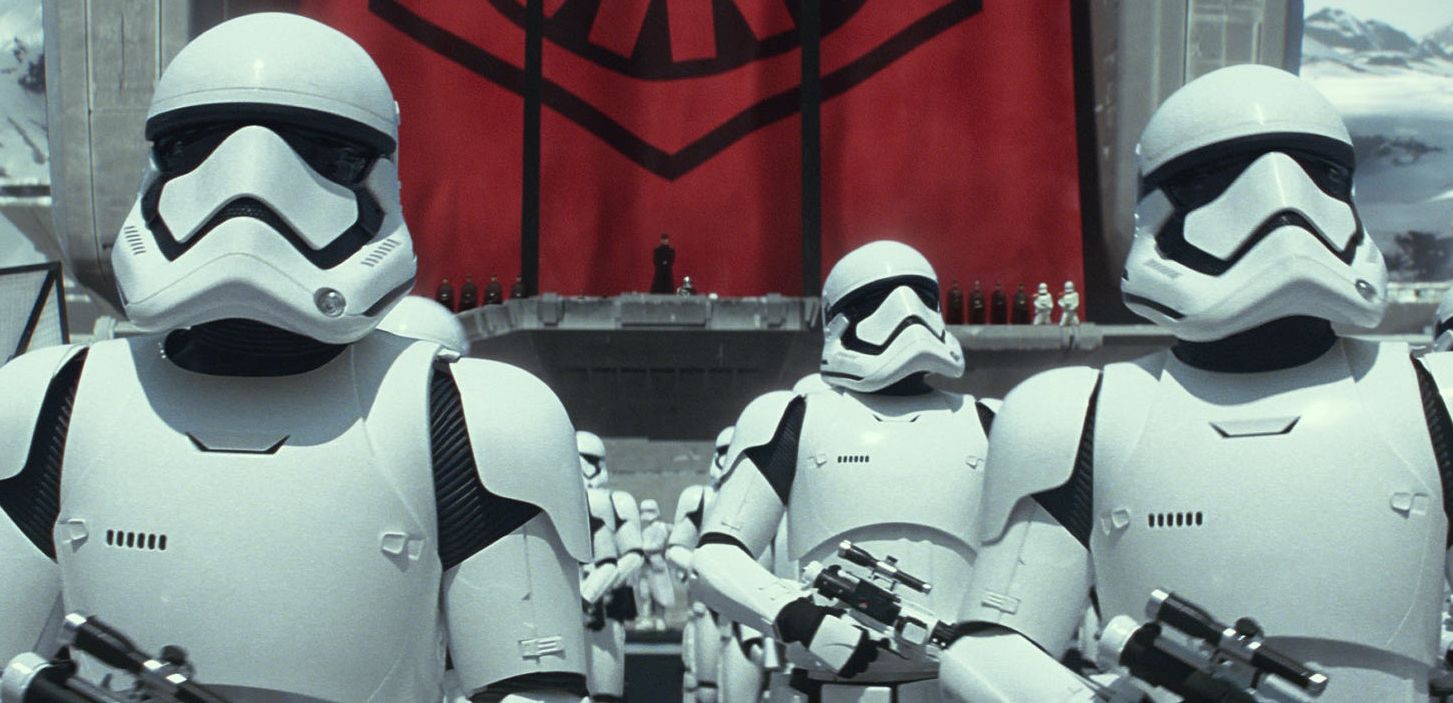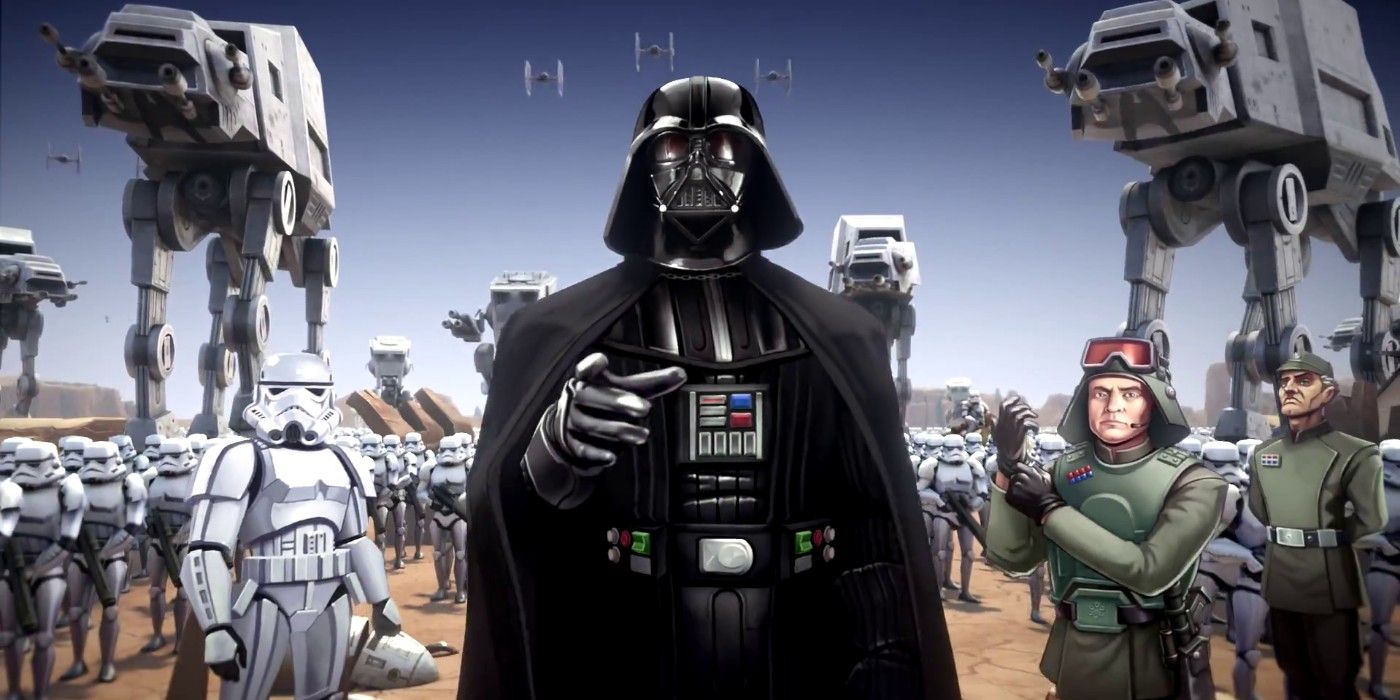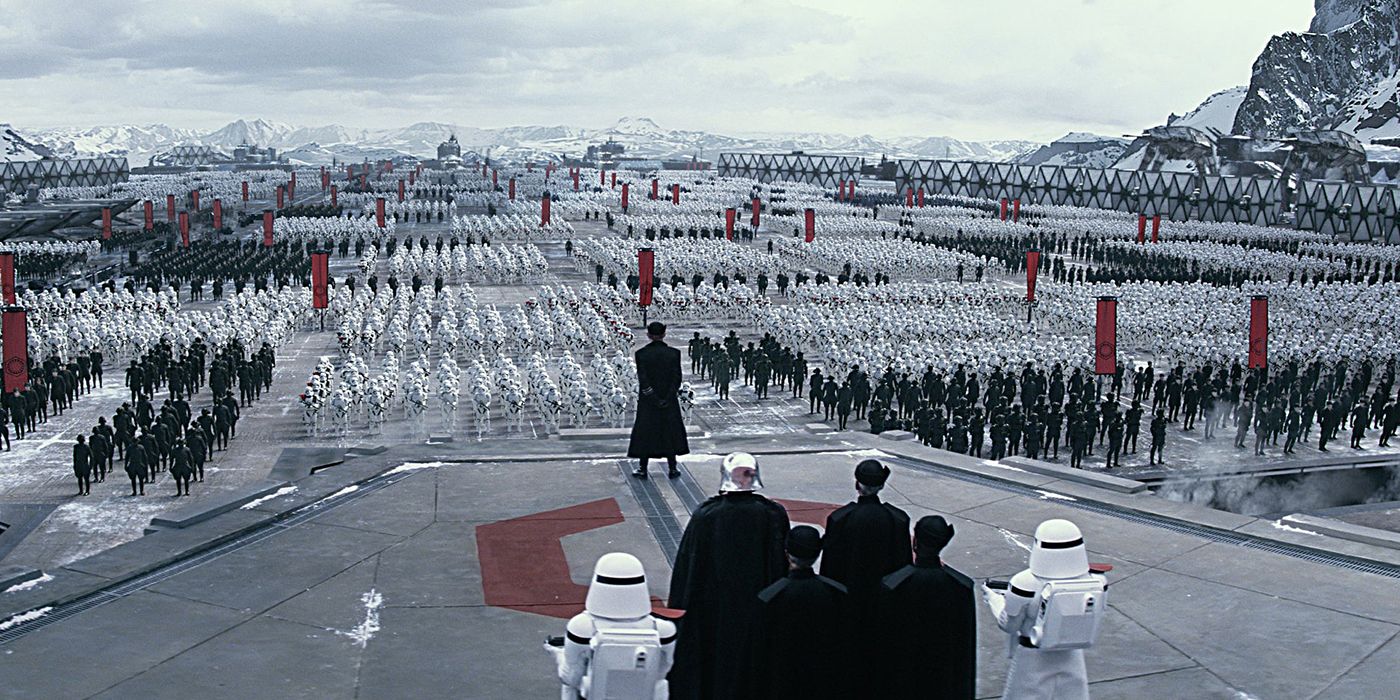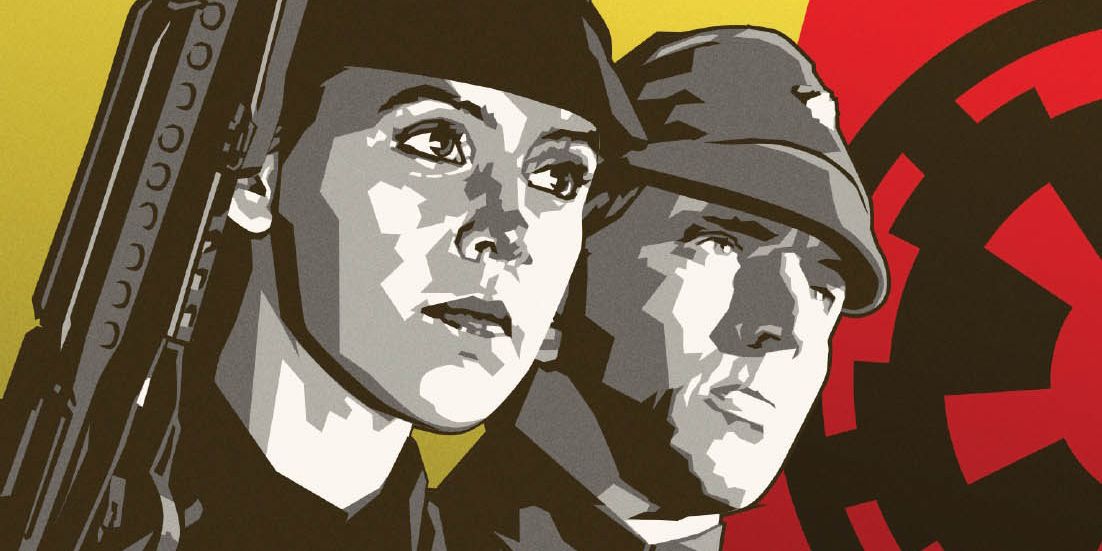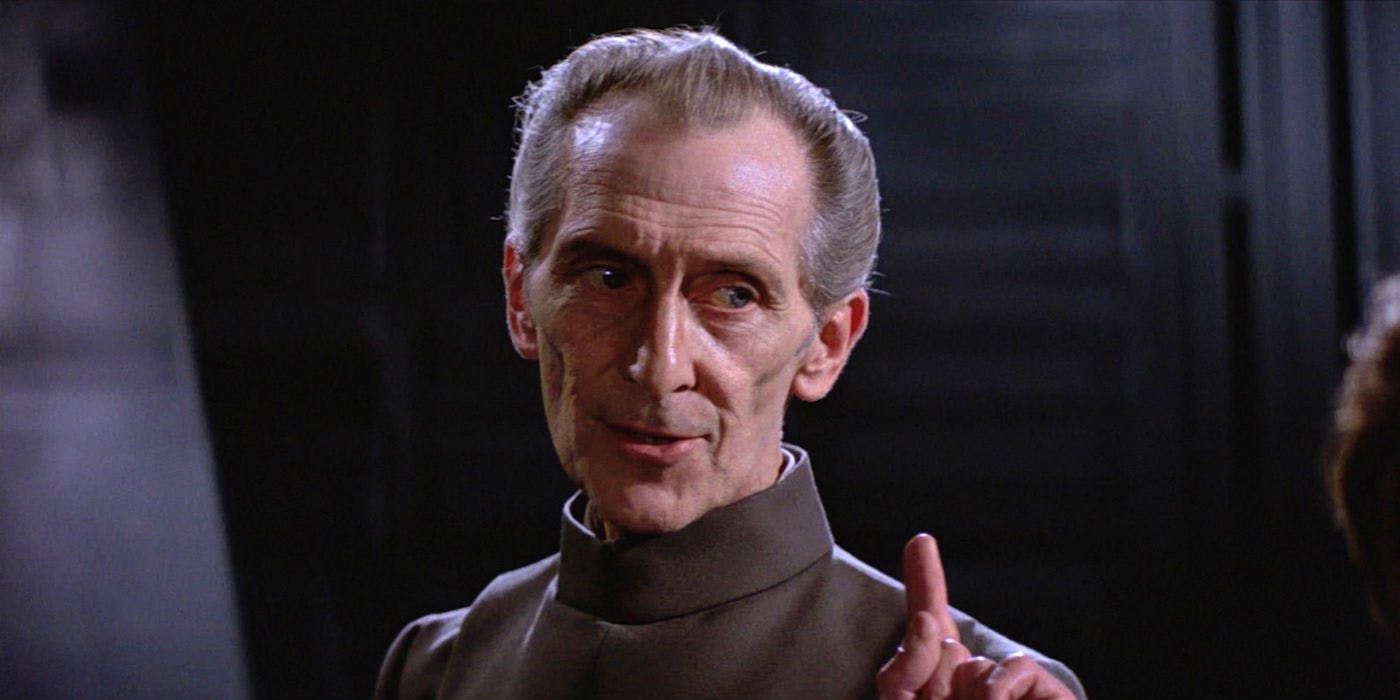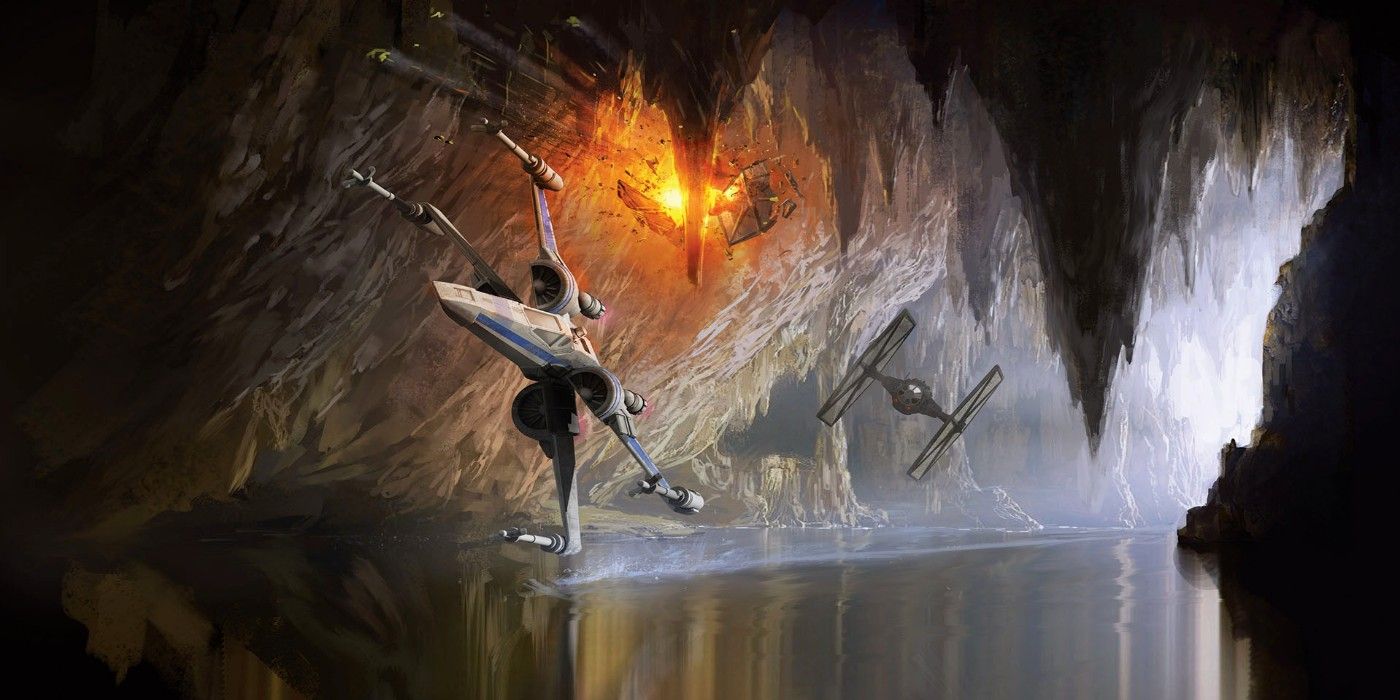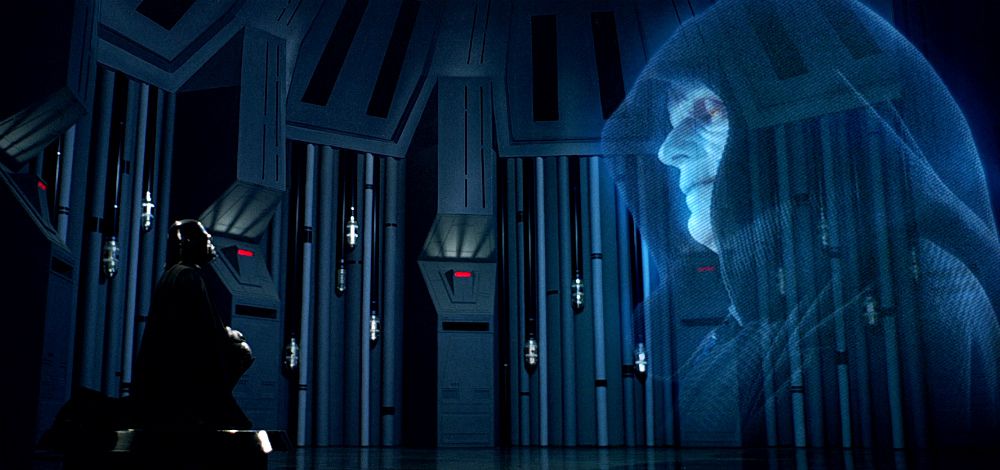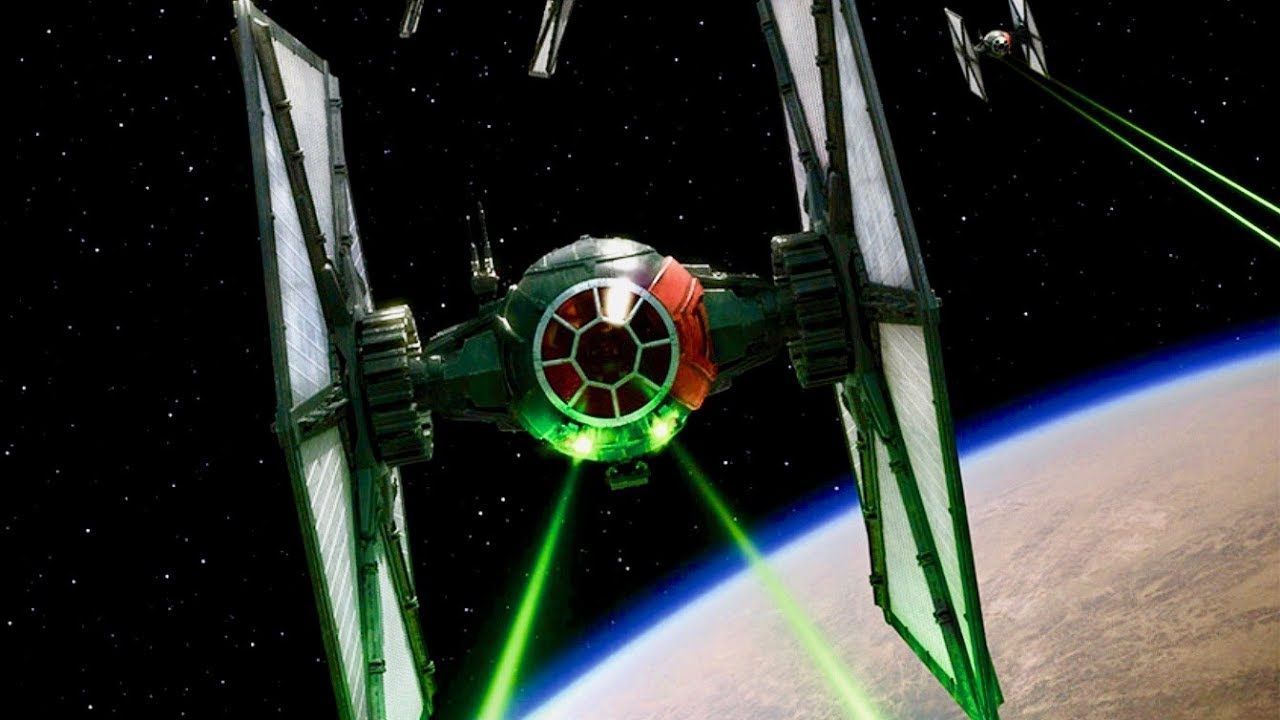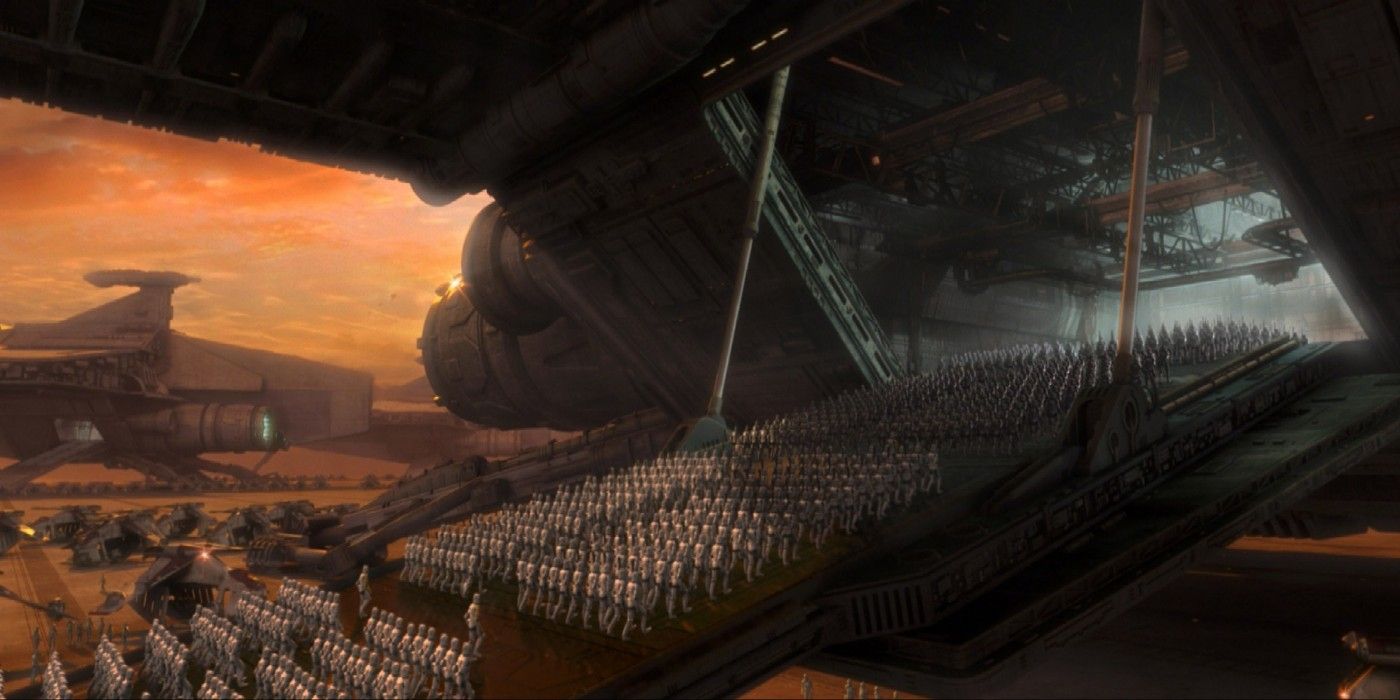When the iconic yellow print crawled up the screen during the opening of Episode IV: A New Hope, no audience member had ever heard of the evil Empire. But in 1977, it was made clear in a dark theater that it was one of the most fearsome dictatorships in the galaxy. Over the course of three films, fans would see the extent of its war on freedom, and when George Lucas announced he was making prequels to the original trilogy, they saw the machinations that led to its rise. The new trilogy of Star Wars films has introduced the First Order, a fascist regime that has risen from the ashes of the Empire’s defeat in Return of the Jedi. Where the Empire was a sprawling government body that controlled everything from taxes to education, the First Order is a small faction of fanatics intent on making an even better version of their dictatorial predecessor.
Though some Star Wars fans will see many similarities between the two, there are enough differences to give insight into their supremacy. The Empire valued strength over loyalty, and thus had capable enforcers of its doctrine, from its officers to the Emperor and Darth Vader. The First Order values loyalty over strength, and thus allows incompetence to permeate from its lowest soldier to its High Command. While it may seem that the First Order couldn’t exist without the Empire, it has improved on everything from its warships to its battle tactics. And while the Empire seemed hindered by arrogance and archaic ideologies, it couldn’t have controlled the galaxy without a system of rules. Each is just as powerful as the other, in its own ruthless way.
20 THE FIRST ORDER: IT HAS NOTHING TO LOSE
The First Order made a powerful impact in The Force Awakens, from shows of strength by wiping out villages to destroying multiple planets with the Starkiller Base. But for all its might, it didn’t sag under the weight of its own legacy.
According to the 2016 novel Bloodline, the First Order is roughly five or six years old by the time of Episode VII, meaning that it didn’t have years in which to grow fat and arrogant like The Empire. It’s as scrappy as the newly minted Resistance, meaning that it has nothing to lose as a fringe conglomeration of Imperial dregs. Any victory, no matter how small, is still a victory.
19 THE EMPIRE: IT HAD THE ENTIRE GALAXY AS A TAX BASE
Because the Empire sprang from the scorched remains of the defeated Republic, it was the ruling body of government for the entire galaxy. In an unprecedented move, it implemented a hefty tax rate for all of the star systems under its control.
With the tax funds, it could finance extensive military campaigns, resettlement, armed occupation, and even black market arms dealing. The bureaucrats loyal to the Empire seldom got taxed, but the rest of the galactic population suffered steep trading tariffs that often left it unable to pay. Any citizen found lacking in taxes was subject to strict punishment, which could even mean enslavement on a debtors colony.
18 THE FIRST ORDER: IT DIDN’T CLING TO THE PAST
To many Star Wars fans, the First Order may have seemed like The Empire 2.0, or even Empire Lite. It had many similarities to its preceding dictatorship: a superweapon, a fanatical following, a fleet of powerful warships, and even two Dark Side users at its helm. However, an important way in which it was different lay in it casting old ideologies aside.
Not to be guided by outmoded ways of thinking and clinging to an autocratic past, it sought to forge ahead as a new superpower. Its stance was simple; permanent warfare was a way of life, pacifism was weakness, and governments spawned stagnancy.
17 THE EMPIRE: IT HAD A HIERARCHY OF AUTOCRATS FOR CONTROL
In a sharp contrast to the military-focused hierarchy of the First Order, the Empire’s might came not simply from the head of the snake and the Emperor’s omnipotence, nor even his formidable fleet, but from the leadership he put in place in each star system under his control.
As a senator, Palpatine once condemned bureaucrats for poisoning the progress of a governing body. As an emperor, he was careful in selecting the regional governors that would control certain parts of his empire. These included governors that were also part of his military, the system of Moffs and Grand Moffs that decided both military and bureaucratic strategies.
16 THE FIRST ORDER: IT NEVER DID EMPTY THREATS
The Emperor liked to make grand displays of power that often amounted to idle threats. In Return of the Jedi, he threatened to blast Endor and the Rebel fleet just to make a point about their obsolescence to Luke Skywalker. Grand Moff Tarkin, in charge of his first Death Star, wasn’t nearly so cavalier, and used the superlaser to destroy Princess Leia’s home planet of Alderaan.
The First Order, under no such delusions of grandeur, used its Starkiller Base to send out multiple blasts that could target planets significantly further away from Alderaan. One of which was the New Republic capital of Hosnia.
15 THE EMPIRE: IT HAD A MASSIVE FLEET OF STAR DESTROYERS
The strength of The Empire was in the enormity of its naval fleet. With its seemingly endless supply of Star Destroyers, it could indefatigably patrol Imperial Space and enforce its will with an iron fist. The destruction of one or two Star Destroyers was inconsequential, as proven when Darth Vader orders several into an asteroid field to pursue the Millennium Falcon in The Empire Strikes Back.
By contrast, the First Order has only a fraction of the ships the Empire had in its heyday. Composed of the remains of the fleet to begin with, it doesn’t have the resources nor the droid/manpower to make its numbers contend with the Empire’s.
14 THE FIRST ORDER: IT ISN’T PREDICTABLE
Due to its size, the Empire needed to have efficiency in all areas, and follow a doctrine and code of conduct that became to its enemies, by and large predictable. Its Star Destroyers, for instance, were known to dump their garbage before jumping to lightspeed, allowing the perfect opportunity for Han Solo to conceal his ship in the debris.
The First Order has championed itself as something of an unpredictable entity; it managed to build an entire superweapon in the middle of a planet undetected, use it to hit multiple targets, and have uncharacteristic hiring policies (women in the ranks).
13 THE EMPIRE: EXTENSIVE SHIP BUILDING AND WEAPON CONTRACTS
In order to successfully rule the galaxy, a naval fleet is a requirement, and an obscenely large one at that. “The galaxy” in the Star Wars Universe is a phrase thrown about to include an expanse that really could include several hundred galaxies. Space is enormous, and in the Star Wars Universe it is comprised of dozens of different star systems.
To have an armed fleet the size of the Empire’s, it needed to have dozens of government contracts. These contracts not only fueled the economy in certain sectors, but guaranteed the Empire would have more firepower than any opposition it faced.
12 THE FIRST ORDER: LEADERS GREW UP IDOLIZING VADER AND PALPATINE
It took almost 30 years for the First Order to get to the point where it could attack the New Republic and try to restore its own brand of order to the galaxy. In its current state, it was only operating for roughly five years, the previous decades being spent gathering the remnants of the Imperial fleet and sympathizers.
While this happened, the ranks of the First Order were being filled by warmongering, power hungry individuals who had grown up idolizing the icons of the Empire like Darth Vader and Emperor Palpatine. They would fashion themselves in their images, but even more ruthless, and more merciless.
11 THE EMPIRE: IT COULD DEMAND RESOURCES FROM ANY PLANET
The Empire was once the Old Republic, the galaxy’s governing body, and a collection of star systems that diplomatically decided on political, sociological, and economical actions. When the transition occurred from a democracy to a dictatorship under Chancellor Palpatine, most star systems remained under the Empire, for fear of the consequences of secession.
The Empire had control over systems that were bursting with natural resources (as well as slave labor), and it could call upon their extraction at any time. The First Order, by contrast, governs nothing, and is only an unruly faction. It is as revolutionary a group as the Resistance fighters it despises.
10 THE FIRST ORDER: IT IMPROVES ON THE EMPIRE’S FAILINGS
For all that the The Empire succeeded in subduing an entire galaxy and bleeding it of its resources and labor force, there were stark failures on its part that resulted in its downfall; not seeing the Rebel Alliance as a real threat, and underestimating the importance of Luke Skywalker.
The First Order seeks to eradicate the failings of its predecessor by not only building bigger faster ships and superweapons in planets, but treating the Resistance (small as they are) as a credible enemy, and hunting for Luke Skywalker as a means to end the Jedi Order and thus its inspiration in the galaxy.
9 THE EMPIRE: IT CONTROLLED THE ENTIRE GALAXY
As impressive as the First Order appears, with its dark crimson banners, crisp black uniforms, and streamlined naval fleet, it’s a case of style over substance. The First Order is not a galaxy-class superpower, and it doesn’t control more than a small sector of the space it constructed the Starkiller Base in.
The Empire, by contrast, controlled an entire galaxy. It was the governing body and means of trade. It controlled the banks, the means of production, and the educational system. The First Order, by contrast, represents a fraction of its size, and has almost no sphere of influence, which explains why it had to blow up the New Republic capital.
8 THE FIRST ORDER: IT HAD ASSISTANCE FROM IMPERIAL SYMPATHIZERS
Following the destruction of the second Death Star, and the ends of Emperor Palpatine and Darth Vader in Return of the Jedi, the Empire tucked its tail between its legs and ran from the burgeoning threat of the Rebel Alliance. But the victory wasn’t so decisive that it prevented Imperial sympathizers from meeting in secret in the Outer Rim territories, beyond Republic jurisdiction, and plot to overthrow it.
The First Order was spawned from the support of Imperial sympathizers who profited from the Emperor’s dictatorship and didn’t look forward to answering for their war crimes. Evading capture and bulking up the First Order’s fleet and ranks seemed the only solution.
7 THE EMPIRE: IT HAD ACTIVE AND HEALTHY RECRUITMENT
One of the standout differences between The Empire and the First Order was in their methods of recruitment (or lack thereof). The Empire was known to first rely on clone troopers, and when their accelerated aging phased out their effectiveness, they actively recruited on every star system (some of which is seen as propaganda in Solo: A Star Wars Story). Even Luke Skywalker thought the only way to get off-world and “See the galaxy” was through enrollment in the Imperial Academy.
The First Order, by contrast, resorts to kidnapping children (Finn) to join its ranks, training them from infants to be indoctrinated. It’s a far cry from the honor it formerly was to be a member of the Imperial navy.
6 THE FIRST ORDER: IT HAS MORE POWERFUL SHIPS
Though the First Order fleet isn’t nearly as large as The Empire’s, its ships are technologically more advanced and much grander. The Resurgent- class Star Destroyer, the First Order’s newest vessel, is nearly twice as large as a regular Imperial Star Destroyer. The First Order Navy also has Lancer-class frigates, Maxima-A class heavy cruisers, and a Dissident- class light cruiser.
By far the most impressive ships in the fleet are the Mandator IV-class Siege Dreadnoughts, like the Fulminatrix that destroyed the Resistance base in The Last Jedi, or Supreme Leader Snoke’s Mega-class Dreadnought and floating capital the Supremacy, which was almost as big as the Death Star itself.
5 THE EMPIRE: IT HAD A STREAMLINED IDEOLOGY
In order to maintain order in the galaxy, the Empire needed a set of policies that could not be defied. This became known as the Tarkin Doctrine, named after Wilhuff Tarkin, one of the Empire’s regional governors. After achieving the highest rank the Imperial military had to offer (Grand Moff), Tarkin issued a statement outlining his core beliefs on how the Empire would rule.
Tarkin believed that it was the civic responsibility of every Imperial citizen to contribute in service to the Empire. Peace and order was only possible through fear and intimidation. The First Order relies on its military might alone, and has no core beliefs to contextualize it.
4 THE FIRST ORDER: IT’S STRATEGIES FOCUS ON DOGFIGHTS
The First Order doesn’t make the mistake of underestimating small fighter attacks. It has an entire corps devoted to starfighter pilots. When any raid is made by the Resistance by Rapier squadron or otherwise, a flurry of TIE-fighters it there to meet it. By building its strategy around dogfights, its large ships are not in danger of their approach.
One of the greatest victories over The Empire came from the Alliance’s use of one-man starfighters. In the attack on the Death Star in A New Hope, a squadron of X-Wings are utilized to make the assault on the exhaust port that leads to the main reactor. Command is alerted to the danger of their strategy, but it goes ignored based on their underestimation.
3 THE EMPIRE: IT WAS LEAD BY TWO POWERFUL SITH
It’s difficult to gauge how much Emperor Palpatine’s use of the Dark Side granted him clairvoyance in Imperial matters. But one thing is for sure; the Empire came into being because he was one of the most powerful Sith in the galaxy. His apprentice Darth Vader, also as powerful, was his ruthless enforcer from the beginning to the end of The Empire.
The First Order is also led by two Dark Side users, but they are not Sith. Sith demand loyalty but reward strength (after all, a Sith apprentice does not become a master by being loyal, but by killing his mentor). Supreme Leader Snoke rewards loyalty, and thus is often surrounded by incompetence, especially in his own enforcer Kylo Ren.
2 THE FIRST ORDER: IT FACED A DEMILITARIZED REPUBLIC
Following The Empire’s fall after Return of the Jedi, the Rebel Alliance that had led so many attacks against it became the New Republic. Remnants of the Imperial Fleet massed and attempted on last assault in the "Battle of Jakku", but they were defeated. As the Rebel Alliance transitioned from cells of freedom fighters into senators and diplomats, many voted to demilitarize in the hopes that galactic warfare would be eliminated.
The First Order essentially faced a demilitarized and declawed Rebel Alliance. As the New Republic, they did not officially sanction any missions the Resistance undertook, and the Resistance fleet was therefore smaller, giving the First Order the upper hand.
1 THE EMPIRE: IT ROSE FROM A PRE-EXISTING MILITARY
By the time that Chancellor Palpatine had declared himself Emperor, he had already been playing a long political game. Secretly fueling the Separatist Movement as Darth Sidious, he played both sides when he appeared as the kindly Senator Palpatine to the Republic, the Jedi, and the Galactic Senate. He had helped create the need for a Grand Army of the Republic, the ranks of which he promptly rolled into the Imperial Military.
The First Order, though it had the support of many Imperial sympathizers, took much longer to come into being. With many star systems that were once under the Empire’s control now merging with the New Republic, it was forced to find resources elsewhere to amass a military to take it on.

